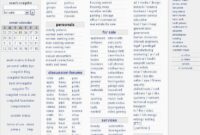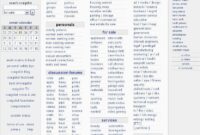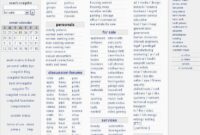Bed Liners Pickup Trucks: The Ultimate Guide to Protecting Your Investment pickup.truckstrend.com
For millions of pickup truck owners worldwide, their vehicle is more than just a mode of transport; it’s a workhorse, an adventure companion, and a significant investment. From hauling construction materials and landscaping supplies to transporting camping gear and sports equipment, pickup truck beds endure a tremendous amount of abuse. This constant wear and tear can lead to scratches, dents, rust, and structural damage, significantly diminishing the truck’s appearance, functionality, and resale value. This is where the unsung hero of truck accessories comes into play: the bed liner.
A bed liner is a protective layer, typically made from durable materials like polyethylene, rubber, or polyurethane, designed to shield the truck bed from impact, abrasion, and corrosion. It acts as a barrier, absorbing the brunt of heavy loads, sharp objects, and corrosive elements, thereby preserving the integrity and aesthetics of the truck’s original paint and metal. Investing in a quality bed liner isn’t just about maintaining appearances; it’s a crucial step in extending the life of your truck and maximizing its utility.
Bed Liners Pickup Trucks: The Ultimate Guide to Protecting Your Investment
Why Do You Need a Bed Liner? The Unseen Benefits
While the primary function of a bed liner is protection, its advantages extend far beyond mere damage prevention. Understanding these benefits can help truck owners appreciate the value a good bed liner brings.
- Superior Protection Against Damage: This is the most obvious benefit. A bed liner creates a robust barrier against scratches, dents, and dings caused by shifting cargo, tools, and materials. Without it, the truck bed’s painted surface is highly susceptible to damage, which can quickly lead to rust.
- Rust and Corrosion Prevention: Once the paint is scratched or chipped, the bare metal of the truck bed is exposed to moisture, leading to rust. Bed liners, especially those that provide a complete seal, are excellent at preventing water and corrosive chemicals from reaching the metal, thereby inhibiting rust formation.
- Enhanced Cargo Stability: Many bed liners, particularly spray-on and rubber mat types, offer a high-friction surface. This textured surface helps to grip cargo, preventing it from sliding around during transit. This not only protects the cargo itself but also reduces noise and potential damage to the truck bed from impact.
- Increased Resale Value: A well-maintained truck bed is a significant factor in a truck’s overall resale value. A truck with a pristine, protected bed will command a higher price than one with a dented, scratched, or rusty bed, demonstrating that the owner took good care of their vehicle.
- Noise Reduction: The cushioning effect of some bed liners can significantly reduce the rattling and banging noises often associated with loose cargo in an unprotected metal bed. This leads to a quieter and more pleasant driving experience.
- Improved Aesthetics: A clean, well-fitted bed liner can significantly enhance the visual appeal of a truck bed, giving it a professional and finished look.

Types of Bed Liners: Choosing Your Armor
The market offers several types of bed liners, each with its unique characteristics, pros, and cons. The best choice depends on your specific needs, budget, and the type of work your truck performs.
1. Drop-in Bed Liners
Drop-in bed liners are pre-formed shells, typically made from high-density polyethylene (HDPE) plastic, that are designed to fit perfectly into the contours of your truck bed. They are a popular choice due to their affordability and ease of installation.
- Pros:
- Cost-Effective: Generally the least expensive option.
- Easy Installation: Can often be installed by the owner in minutes, usually without special tools.
- Removable: Can be removed for cleaning underneath or for access to the original bed.
- Impact Protection: Excellent at absorbing impacts from heavy drops.
- Cons:
- Water Trapping: Can trap water and debris underneath, leading to rust if not regularly removed and cleaned.
- Abrasion: The plastic can abrade the original paint on the truck bed over time due to vibrations and movement, creating areas prone to rust.
- Slippery Surface: The plastic surface can be slick, causing cargo to slide around.
- Less Custom Fit: While designed for specific models, the fit isn’t as seamless as a spray-on.
Drop-in liners come in two main styles: "under-rail" (sits below the bed rails) and "over-rail" (extends over the bed rails for added protection).
2. Spray-on Bed Liners
Spray-on bed liners are liquid polymer coatings, usually polyurethane or a polyurea blend, that are professionally applied directly to the truck bed, forming a permanent, seamless bond. They are known for their superior protection and durability.
- Pros:
- Superior Protection: Forms an impenetrable, watertight, and highly durable barrier against scratches, dents, rust, and chemicals.
- Seamless Fit: Adheres directly to the truck bed, creating a custom, contoured fit that prevents water and debris from getting underneath.
- Non-Slip Surface: Provides an excellent textured, non-slip surface that keeps cargo firmly in place.
- UV Resistance: Most quality spray-on liners are UV stable, preventing fading and chalking over time.
- Enhanced Aesthetics: Offers a clean, factory-like finish that enhances the truck’s appearance.
- Lifetime Warranty: Many professional applications come with a limited lifetime warranty.
- Cons:
- Higher Cost: Significantly more expensive than drop-in liners.
- Permanent: Once applied, it cannot be easily removed without damaging the original bed.
- Professional Installation Recommended: Requires specialized equipment and expertise for proper application, making DIY challenging and often yielding inferior results.
- Curing Time: Requires time to cure before heavy use.
3. Mat/Rug Liners
Bed mats or rug liners are typically made from thick rubber, carpet, or composite materials. They are laid flat on the truck bed floor and sometimes extend up the tailgate.
- Pros:
- Excellent Cargo Grip: Rubber and carpet mats provide exceptional non-slip surfaces, preventing cargo movement.
- Impact Cushioning: Offers good protection against impacts to the bed floor.
- Removable: Easy to remove for cleaning.
- Affordable: Generally less expensive than spray-on liners.
- Cons:
- Limited Protection: Only covers the bed floor and sometimes the tailgate, leaving the sidewalls exposed.
- Water Trapping: Can trap moisture underneath if not removed regularly for drying.
- Less Durable: May wear out faster than spray-on or drop-in liners, especially with heavy use.
4. Paint-on/Roll-on Bed Liners (DIY)
These are DIY kits where a liquid coating is applied by rolling or brushing it onto the truck bed. They are a more affordable alternative to professional spray-ons.
- Pros:
- Cost-Effective: Much cheaper than professional spray-ons.
- DIY Friendly: Can be applied by anyone with basic painting skills.
- Seamless (if applied well): Can provide a seamless, custom fit.
- Cons:
- Durability Varies: Quality and longevity can vary greatly depending on the product and application technique.
- Requires Extensive Prep: Proper surface preparation is crucial for adhesion and durability, often underestimated by DIYers.
- Aesthetics: May not achieve the same professional finish as a spray-on.
- Labor Intensive: Can be time-consuming to apply properly.
Choosing the Right Bed Liner: Key Considerations
Selecting the ideal bed liner requires a careful assessment of your needs and priorities.
- Your Usage:
- Light Duty/Occasional Hauling: A drop-in or a heavy-duty mat might suffice for protecting against everyday wear and tear.
- Heavy-Duty Work/Construction: A spray-on liner is highly recommended for maximum protection against impacts, chemicals, and constant abuse.
- Budget: Drop-in liners and mats are the most budget-friendly upfront. Spray-on liners represent a higher initial investment but offer long-term value.
- Durability Requirements: If you need the toughest, most long-lasting protection, spray-on is the clear winner.
- DIY vs. Professional Installation: Drop-ins and mats are DIY-friendly. Spray-ons are best left to professionals. DIY paint-on kits are an option if you’re comfortable with extensive prep work.
- Vehicle Compatibility: Always ensure the liner is specifically designed for your truck’s make, model, and bed length.
- Aesthetics: Consider whether a seamless, factory-like finish (spray-on) or a visible plastic shell (drop-in) aligns with your aesthetic preferences.
Installation Guide: A Glimpse into the Process
While a full DIY guide for every type is beyond this scope, here’s a general overview of the installation processes:
Drop-in Liner Installation:
- Clean the Bed: Thoroughly clean the truck bed, removing all dirt, debris, and any old adhesive. Ensure it’s completely dry.
- Inspect: Check for any existing rust or damage. Address these before installing the liner.
- Place the Liner: Carefully lower the drop-in liner into the truck bed, aligning it with the contours.
- Secure (Optional/Recommended): Some drop-in liners come with mounting hardware (screws or clips) to secure them to the bed. This prevents rattling and abrasion. Drill pilot holes if necessary and secure the liner.
Spray-on Liner Application (Professional Overview):
- Preparation (CRITICAL): This is the most vital step. The truck bed is thoroughly cleaned, degreased, and then meticulously sanded (scuffed) to ensure proper adhesion. All paint, rust, and contaminants must be removed.
- Masking: The entire truck exterior, including the cab, tailgate exterior, and surrounding areas, is precisely masked off to prevent overspray. Drain holes are also typically plugged.
- Application: Using specialized high-pressure spray equipment, the multi-component polymer mixture is applied evenly in several coats to achieve the desired thickness and texture.
- Curing: The liner needs time to cure (dry and harden). Initial cure is usually a few hours, but full cure can take several days to a week. The truck should not be used for heavy hauling during the initial curing phase.
Maintenance and Longevity
Proper care can significantly extend the life and effectiveness of your bed liner.
- Drop-in Liners: Regularly remove the liner to clean out trapped dirt, leaves, and moisture. Inspect the underlying truck bed for signs of rust or abrasion. Clean the liner with soap and water.
- Spray-on Liners: These are relatively low maintenance. Simply hose them down or use a pressure washer to clean off dirt and debris. Avoid harsh chemicals unless specifically recommended by the manufacturer. Some manufacturers offer UV protectants to maintain color over time.
- Mat/Rug Liners: Remove and shake out debris. Hose down or vacuum as needed. Ensure the bed floor underneath is dry before replacing the mat to prevent moisture trapping.
Challenges and Solutions
Even with the best intentions, certain challenges can arise with bed liners.
- Challenge: Water/Debris Trapping (Drop-ins):
- Solution: Regular removal and cleaning of the liner and the truck bed underneath. Ensure drainage holes in the truck bed are clear. Consider adding small rubber spacers if the liner is too tight, but this can introduce more abrasion.
- Challenge: High Cost (Spray-ons):
- Solution: View it as a long-term investment that protects the truck’s value and avoids future repair costs. Consider financing options if available, or explore high-quality DIY paint-on kits if budget is a major constraint and you’re confident in your application skills.
- Challenge: Installation Complexity (Spray-ons):
- Solution: Always opt for professional installation for spray-on liners. The expertise, equipment, and environment of a professional shop ensure a durable and aesthetically pleasing finish.
- Challenge: Fading/Wear:
- Solution: Choose high-quality liners with UV inhibitors. For existing liners, use UV protectant sprays or dressings specifically designed for bed liners. Regular cleaning can also prevent embedded dirt from dulling the surface.
Practical Advice and Actionable Insights
- Assess Your Needs First: Before looking at products, clearly define how you use your truck. This will guide your choice of liner type.
- Don’t Compromise on Quality: A cheap liner that fails prematurely is a waste of money. Invest in a reputable brand or professional service.
- Read Reviews: Look for reviews from other truck owners who use their vehicles similarly to how you intend to use yours.
- Get Multiple Quotes: For professional spray-on liners, get quotes from several reputable installers in your area. Ask about their process, materials, and warranty.
- Proper Prep is Paramount: For any DIY application (especially paint-on), remember that surface preparation is 80% of the job. Don’t skip steps.
- Consider Accessories: Some bed liners are compatible with tie-downs, cargo management systems, or tonneau covers. Plan for these if you intend to add them.
Estimated Price Guide for Bed Liners Pickup Trucks
Please note that these are estimated prices and can vary significantly based on truck make/model, bed size, geographical location, brand reputation, and specific features.
| Bed Liner Type | Estimated Price Range (USD) | Key Features / Notes |
|---|---|---|
| Drop-in Liner | $150 – $350 | Least expensive. Quick, easy DIY install. Good impact protection. Can trap water. |
| Spray-on Liner | $450 – $800+ | Most durable, seamless, non-slip. Professional application required. Highest cost. Often comes with a warranty. |
| Truck Bed Mat | $70 – $200 | Excellent cargo grip, good impact cushioning for floor. Easy to remove. Limited side wall protection. |
| Truck Bed Rug | $100 – $300 | Carpeted for soft loads, good grip. Comfortable for kneeling. Can absorb moisture. |
| Paint-on/Roll-on (DIY Kit) | $100 – $250 | DIY application, cost-effective alternative to spray-on. Requires extensive surface prep. Durability varies. |
| Line-X/Rhino Linings | $500 – $900+ | Premium spray-on brands. Known for extreme durability, UV stability, and often a lifetime warranty. Professional application. |
Frequently Asked Questions (FAQ)
Q1: How long do spray-on bed liners last?
A1: High-quality spray-on bed liners, especially from reputable brands like Line-X or Rhino Linings, are designed to last the lifetime of your truck. Many come with a limited lifetime warranty. Their durability depends heavily on proper surface preparation and application.
Q2: Do drop-in bed liners cause rust?
A2: They can. Drop-in liners can trap moisture, dirt, and debris underneath them. Over time, the constant vibration of the liner against the truck bed can abrade the paint, exposing bare metal. If water gets trapped in these exposed areas, rust can form. Regular removal and cleaning can mitigate this risk.
Q3: Can I install a spray-on liner myself?
A3: While DIY spray-on kits (paint-on/roll-on) are available, professional spray-on liners require specialized equipment, expertise, and a controlled environment for proper application and optimal durability. For the best results and a lasting finish, professional installation is highly recommended.
Q4: Are truck bed mats enough protection?
A4: Truck bed mats offer excellent impact protection for the bed floor and superior cargo grip. However, they do not protect the sidewalls or tailgate (unless you get a separate tailgate mat). For comprehensive protection against scratches and dents on all surfaces, a full bed liner (drop-in or spray-on) is more effective.
Q5: Does a bed liner affect resale value?
A5: Yes, positively. A truck with a well-maintained, protected bed indicates that the owner has taken good care of the vehicle. This can significantly increase its appeal and command a higher resale price compared to a truck with a damaged, rusty, or neglected bed.
Q6: What’s the best bed liner?
A6: There’s no single "best" bed liner; it depends entirely on your individual needs and budget.
- For ultimate protection and durability: Spray-on liners (e.g., Line-X, Rhino Linings).
- For budget-friendliness and DIY installation: Drop-in liners or high-quality bed mats.
- For occasional light use and cargo grip: A heavy-duty rubber bed mat.
Conclusion
A pickup truck bed liner is far more than just an accessory; it’s an essential protective layer that safeguards your vehicle’s most vulnerable area. From the economical and easily installed drop-in liners to the robust, seamlessly integrated spray-on solutions, and the practical utility of bed mats, there’s a liner type to suit every truck owner’s needs and budget. By understanding the different options, their benefits, and proper maintenance, you can make an informed decision that will protect your investment, enhance your truck’s functionality, and maintain its aesthetic appeal for years to come. Choosing the right bed liner is a testament to smart ownership, ensuring your truck remains a reliable and valuable asset, ready for whatever challenges lie ahead.


